
Bitcoin’s price action is volatile – very volatile. It’s not uncommon to have violent price swings to the upside and downside over short periods of time. When the price drops precipitously, you probably want to figure out why your net worth was just cut by 30% in a single day. So why did the bitcoin price drop today?
If you’re not plugged into the day-to-day news about bitcoin, seeing bitcoin’s price drop fast and hard can be scary. You probably have lots of questions about why the price dropped, and the mainstream media certainly isn’t going to provide the answers. Not only do they often not report on this type of stuff, but when they do report, the information is often watered down, misleading, or just plain wrong. You can’t exactly teach a reporter the fundamentals of bitcoin fifteen minutes before their segment airs.
So why did bitcoin’s price drop this time around? It’s different every time. Sometimes it’s related to significant events, but many times it’s not. 10% price fluctuations in either direction are not really considered “significant” in Bitcoin land, so unless you’re seeing great 15-20% swings, I wouldn’t think too much about it.
Rather than write up a new post every time a downward move happens, I wanted to write a more evergreen piece about why the price drops, and what you can expect as a bitcoin holder. Further in the article, I’ll highlight some specific events surrounding notable drops, but in Bitcoin’s 13 years of history there really are just a few worth remembering. Moving forward, if something notable happens, I’ll add it to the list.
3 Common Reasons For A Bitcoin Price Drop
1. Macro Headwinds

Bitcoin is a globally traded asset and is not immune to global financial conditions. Broadly speaking, when people feel rich, they are going to be able to save more money for the long term. They spend more, but they save more too. When people feel poor, then they are more likely to spend a greater portion of their income on essentials like food and energy, leaving less capacity for saving.
What I mean to say is that when the outlook appears good, people would be more likely to buy risk assets. When global financial conditions are poor, they will sell bitcoin or avoid buying bitcoin. Bitcoin’s main narrative is that it’s a long term store of value, but if you put yourself in a position where you don’t have enough cash to pay the bills, you may become a forced seller to buy groceries.
A good example of this is when the Fed raises interest rates, the cost of borrowing money goes up. That means financial conditions are tighter for everyone. People need cash to pay back loans. They sell bitcoin to do it. When inflation goes up, everything gets more expensive. People need more money to pay for essentials. Their monthly bitcoin purchase may go down or pause. When the prices of other store of value assets go down and those assets are serving as collateral for loans you’ve taken on, bitcoin is a very liquid way to increase your cash position, so you don’t get margin called.
When the cost of capital changes in dollar-denominated economy, the price of bitcoin can be affected.
Though bitcoin is often referred to as being “parallel” or “outside” the legacy financial system, it can still be affected by global market trends in the short term.
Related Content
2. Crypto Bullshit

Though I absolutely consider bitcoin to be a completely different type of asset than crypto, it still is a “cryptocurrency” and is lumped together in the broader crypto market. When something happens to crypto, it happens to bitcoin. Again, bitcoin is a very well-connected, globally liquid asset, tradable 24/7, so people turn to bitcoin when they need to take quick financial actions.
You can’t trade a stock at midnight on a Tuesday. You can’t sell a house in sixty minutes. You can’t get a loan without extensive background checks. You can, however, buy, sell, and borrow bitcoin 24/7 in every country in the world.
So, when crazy stuff happens in crypto, bitcoin gets dragged along with it. Although bitcoin tends to fare better than any other altcoin out there, altcoiner shenanigans can still weigh down the price for periods of time.
This really started in 2017 with the ICO bubble, and now we’re seeing it again in 2022 with the NFT and DeFi bubble collapsing right before our eyes.
In 2017, crypto tokens were getting launched with getting billion dollar valuations despite having no product. The 2018 crash was essentially a stock market crash that happened because these were centralized companies offering a product, and getting retail to dump in money with the expectations that they’d make a return if the company ever launched a successful product. Much like the 2000 dot com crash, these valuations started to crack as companies failed to deliver on their promises, and everyone ran for the exit.
Rock Jpegs And Unsustainable Yields
More recently, we saw insane things in the market like people earning 20,000% yield on staking DeFi tokens, and JPEGs of rocks and drooling monkeys selling for millions of dollars. The NFT and DeFi markets were clearly in a bubble. The question was just how big would the bubble get before it popped, and how far it would drag down the price of bitcoin in its wake.
Well, the USDT “algorithmic stablecoin” and the Terra token ended up being the pin to pop the bubble. Its implosion exposed which companies were irresponsibly long in the Luna token and the Anchor protocol which supposedly yielded a “risk free” 20% to stakers. Turns out, it wasn’t really risk free, and the whole ecosystem imploded.
Now we’re dealing with the fallout. The Celcius lending platform is supposedly insolvent. The 3 Arrows Capital hedge fund has also been reported as “not communicating with counterparties”, so it’s suspected they are in financial trouble. The contagion is spreading. The price of bitcoin is dropping. Yet, nothing has changed about bitcoin in the past few weeks.
Us bitcoiners are just going to have to sit around for a while to flush out all the crypto trash, so we can resume our trend up and to the right.
3. Liquidated Longs
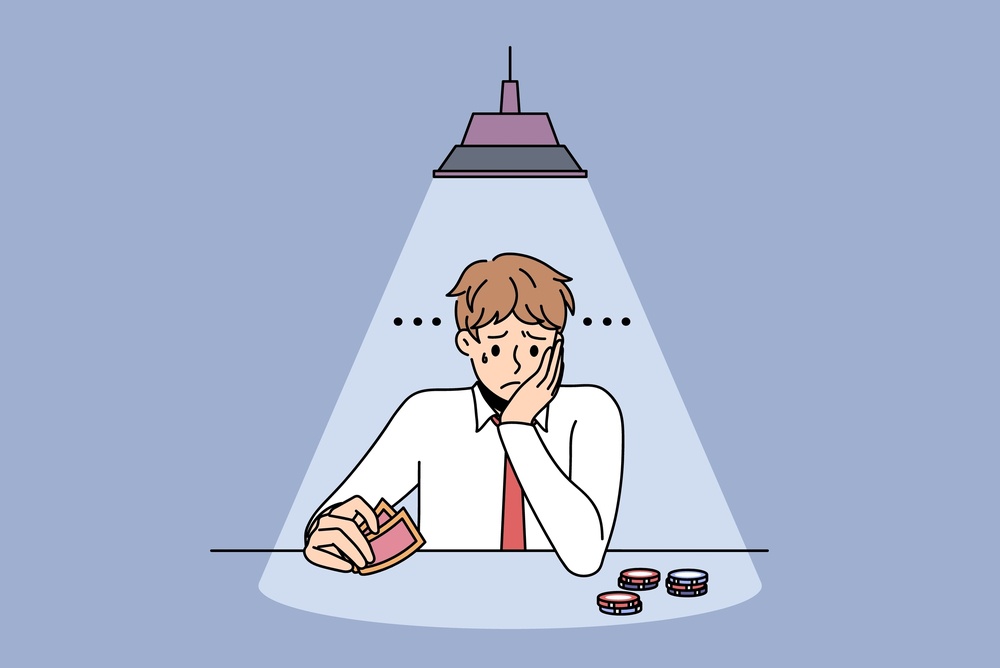
One of the most unfortunate reasons for the bitcoin price dropping is simply that degenerate traders are piling into leveraged trades and getting liquidated. This is just a mechanism of the free market, so you can’t do much about it, but it is annoying to think about. If only people would not be idiots, then it would be a much smoother price ride. That, however, is wishful thinking.
What happens is that bitcoin traders online are not happy with buying and holding bitcoin, so they decide to lever up their trades and “go long” bitcoin. They essentially borrow money to buy more bitcoin, with the promise to pay it back after a certain period of time, and at a certain price. This means that if the price of bitcoin goes up, they are essentially buying bitcoin at a discount and selling it at a profit.
This is how they can earn income, or stack more bitcoin. Sounds great, right?
Well, what happens is that if the price goes down, the value collateral they posted for the loan goes down too. If they don’t post more collateral to maintain the proper loan-to-value ratio, their position gets liquidated, meaning they are forced to sell their bitcoin.
Cascading Liquidations
If enough people get liquidated at one level, then the price drops lower, liquidating more people at lower and lower levels. This is called cascading liquidations, and they cause hard, fast price declines. Prices plummet until buyers start to outnumber sellers, and the market stabilizes at a new price.
The reason I think it’s unfortunate is this happens is that what is basically happening is that the majority of newb retail traders are getting rekt by a few sophisticated traders in the market, and dragging everyone down. If everyone would just chill and stack sats, then we wouldn’t have this specific element of short term price risk.
However, as mentioned above, this type of trading is clearly unavoidable in a global, permissionless, high speed market, so there is literally nothing you could do about it. 100X leverage trading is not legal in the US already, but it still exists in other jurisdictions. So it’s going to happen regardless. It’s just unfortunate to watch.
At the very least, these massive price drops provide opportunities to buy the dip many times throughout the year, so there is some benefit to long term hodlers.
Can The Bitcoin Price Drop Further (2022)?
Have we met, or are we going to meet all of these three criteria? Absolutely. Yes. Very clearly. The bitcoin price can always drop further.
The Risk Of A Global Depression
The entire global financial system is at risk of meltdown due to high inflation, stuck supply chains, and rising interest rates. If rates go higher, we enter a recession. If rates remain the same, inflation continues to skyrocket. CPI is listed as the highest in 40 years, at 8.6%, but everyone pretty much knows that the real inflation rate is actually even higher. Home prices are the highest they’ve ever been. Groceries are 10% more expensive than last year (steak doubled). Gas is over 100% more expensive than last year and still rising. The cost of fertilizer is increasing, threatening to make food even more expensive moving forward.
It’s chaos out there. There are a huge number of macro factors that could cause the price of bitcoin to go even lower.
Crypto Hasn’t Bottomed Yet
99.8% of all tokens in the top 100 list are down 70% and 98.9% are down by at least 90%. Thanks to the Terra/Luna blow up, possible insolvency of several crypto exchanges, and rumored liquidations of crypto funds, the risk of contagion spreading is coming into focus. Bitcoin is already down 69%, but we could still go lower. Historically, an 85% drawdown from the high is within reason, and that would put us at $12,000 per coin.
The saying goes, when the tide goes out, you find out who’s swimming naked. Well, the tide is moving out in Crypto Land and we may not be at the bottom yet.
3. I don’t have much data about the leveraged long traders, so I’m not really sure where that stands in the market right now. What I do know is that there’s a special phrase traders use called revenge trading where you feel angry about losing money so you make stupid trades to try to make your money back. Instead of taking the ‘L’ and moving forward, you lose everything.
With the market down so far already, I wouldn’t be surprised if something like that happened.
Video: Bitcoin Just Crashed 75%…Again?
Can The Bitcoin Price Drop In 2023 Even Though We’re Up 100% Since The Bottom?
Yes, the price can still go South in 2023, and this is the hardest thing to admit for someone who is a sucker for bull market propaganda. I’m already looking at the 2024 halving. I’m feeling the bull market itch after 2 years of bear. I’ve still got laser eyes in my profile from 2020 waiting for that $100k price. I’m a bitcoin permabull.
HOWEVER, it’s important to recognize that there is no law governing the price of bitcoin. There are tens of thousands of potential factors that could affect the bitcoin price negatively, and we have control over none of them. If the market shifts against us, either in bitcoin, crypto, or broader global finance, then we could drop down back from $30k down to $15k again, and even further this time.
People love to draw charts and point to what’s possible or where they think the price is going in the next 18 months, but all of that is really just bullshit when you think about how random everything in the world is.
The lesson of any bull or bear price movement is that you can’t predict with certainty and consistency where the price is going, so you need a different investment strategy, namely to buy bitcoin slowly over a period of time, regardless of price.
In other words, stay humble and stack sats.
Why Did The Price Drop On [This Date]?
To be honest, bitcoin doesn’t need a reason to go down based on any kind of news. In fact, sometimes the price of bitcoin can crash when good news comes out, in a buy the rumor, sell the news event. This is because traders get too bullish leading up to an announcement, then collectively take profits after the news breaks.
There have been many one-day price drops based on nothing at all. It’s not unusual for bitcoin to drop 10-20% in a single day with no news.
The dates below are some of the biggest price drops where the price fell based on a news event, or series of news events. It’s interesting to look at the size of the crash and think about how catastrophic it would have felt back then, then look at the current price. You should feel some appreciation for how hard it would have been to be steadfast and hold your bitcoin for a decade!
4/11/11
In the early years, the vast majority of bitcoin holders – wait – I even hesitate to call them holders, so let’s call them people who owned bitcoin – were basically traders and speculators. Aside from a few technically savvy or particularly prophetic individuals, bitcoin was just magic internet money. We just didn’t have the educational resources. Many of the great educators hadn’t emerged yet. Some people had grand ideas of what bitcoin could become, but only two years into its existence, there was no track record to rely on. It was all speculation.
There was only one major bitcoin exchange where people could trade bitcoin in a centralized way, and the process of how to get your bitcoin onto, as well as off the exchange was slow and cumbersome.
So when the Mt. Gox exchange website began crashing due to an intense spike in price, people began to worry that they wouldn’t be able to get their profits in time, and began to panic sell, triggering a massive selloff.
On 4/9/11 the price of bitcoin was over $200. By 4/12/11 the price was $84. I wasn’t around during that time so I can’t reflect on any feelings, or really pinpoint if it was an exact day where the crash really hit home, but what I can see from the historical charts is that the price of bitcoin dropped around 60% over the course of 3 days.
12/6/13
Two years later, the price of bitcoin had run up more than 10x to more than $1,000 per coin. It was a simple milestone that was really quite unbelievable to those who had bought or mined bitcoin for less than a penny just 3 years earlier.
Then, the Chinese government announced that they were banning institutions from dealing with bitcoin, and thus began a decade of “China FUD” to follow. Though China didn’t ban bitcoin itself, that was pretty much what was printed in headlines. This was pretty weird, considering just a few weeks earlier the Chinese central bank said that the people were allowed to use bitcoin, so it was clearly just a ban on banking institutions.
However, people began to ask, “Had Bitcoin gotten too popular?” Was this the beginning of a worldwide government ban of bitcoin? Mining was heavily concentrated in China at that time, and nobody knew what the news really meant, so the selloff began.
The announcement was made on 12/5/13 and by 12/6/13 the price of bitcoin had been cut from about $1,000 to about $650, a 35% crash in a single day. It would mark the beginning of an extended bear market, where the price would continue to drop and eventually bottom out at $200 per coin in 2015 (85% off of the highs). Many long-time bitcoiners were left asking, “Will bitcoin ever recover from this?”
3/12/20
This is the first event that I lived through, so I can describe more of what it felt like. The price had bottomed at around $3,000 sometime in 2018, and had slowly risen back to around $10,000. Earlier in the year, COVID had begun to gain some steam, but it wasn’t officially a “pandemic”, and it kind of seemed like it would go away like previous bird flus and swine flus in the past. Then it didn’t. Then travel restrictions came. Then lockdowns came. Then global markets started to crash, and “liquidity” dried up overnight as financial markets started to crash.
Basically, what that meant is that people were using financial instruments as collateral to purchase other assets. As prices dropped, they needed to post more collateral, i.e. cash otherwise they would be forced into liquidation. So people began to sell anything they could to prevent being margin called, then even more people sold simply because the market was going down. Some people were in fact liquidated, causing more selling.
A Historical Liquidity Crunch
It was just a selling spree of all types of investments across the board. Everything dropped suddenly on the 12th of March, and of course, since Bitcoin trades 24/7 and doesn’t have any backstops or circuit breakers, it dropped harder than anything else.
In a single day, the price fell from about $8k to $4k, then stabilized around $5k. We’ll call that a 50% drop in a single day. I remember grocery shopping and looking at the price around $4,600, thinking to myself, “Oh shit, we might go back to $1,000!”
It was definitely stomach churning, but by 2020, I had been learning about bitcoin for several years, so I knew the deal. Shit like that just happens sometimes. Still, it was a long grind down from $20k, then a longer grind back up to $10k, and I was just thinking to myself, “Fuck. It’s gonna be a while”. Luckily, I was programmed to “buy the dip”, and bought some bitcoin. In 2022, it’s clear that was a good decision.
5/8/22
Up next, we have two rapid-fire bad news events, and as I write this, it’s still an ongoing situation. On May 8th of 2022, the so-called algorithmic stablecoin called USDT (AKA Terra) lost its peg to the US dollar. It was intended to be a stablecoin that matched the value of the dollar by an automated process minting and burning the Luna token, which had its own independent value (like any other crypto token).
Many predicted the inherent risks of this type of setup, so it was not a surprise to critics when the price depegged from the USD value, then causing sales of the Luna token to try to maintain the peg. As the peg fell further, the Luna Foundation started to sell all their bitcoin to try to prop up the price. In the end, $LUNA hyperinflated to be worth almost nothing, confidence in USDT was destroyed, and the legal fallout has begun.
What’s important here is that the Luna crash did affect the price of bitcoin. The whole ecosystem of Luna, Terra, and Anchor caught a lot of yield chasers in the DeFi space off guard, which caused them to sell bitcoin to meet margins. Then contagion began to spread as traders sold bitcoin, hoping to buy back at a cheaper price.
On May 4th, the price of bitcoin was nearly $40,000 USD. By May 12th, the price was less than $29,000. The largest intraday drop during this time period was on May 8th, with the price plunging from $34k to $30k – about 12%. Not a massive move for a single day in Bitcoin land, but overall a massive move of 25% down for the week.
6/13/22
The selloff continued as large entities which had funds tied up in Luna and Anchor due to its so-called “basically risk free” yield of 20%.
Popular crypto lending platform Celsius was rumored to be insolvent, and bitcoiners began sounding the alarm to withdraw coins from the exchange. Celsius then began putting user funds into “hodl mode”, preventing them from withdrawing their coins, supposedly for their own good. User funds were frozen after that. Soon enough, someone found the Celsius wallet, and the whole (crypto) world began to watch as the price of bitcoin crept closer and closer to its liquidation level. So far, we’re not there, but it’s still on the table.
As rumors began to spread about who was next to declare insolvency, bankruptcy, or get margin called, it became clear that 3 Arrows Capital had been engaging in some degen trading activity and was inappropriately using depositor funds. Some of the details of the situation are lost on me, and it’s still unclear exactly what’s going on.
The main point that’s relevant to us here is that the price of bitcoin dropped from $26,000 to $22,000, or about 15% in a single day as rumors about 3AC began to spread. Right now, we’re sitting at around $20,000, so in just two months, the price of bitcoin has dropped around 50%. Wow.
There Are Not Backstops Or Bailouts In Bitcoin
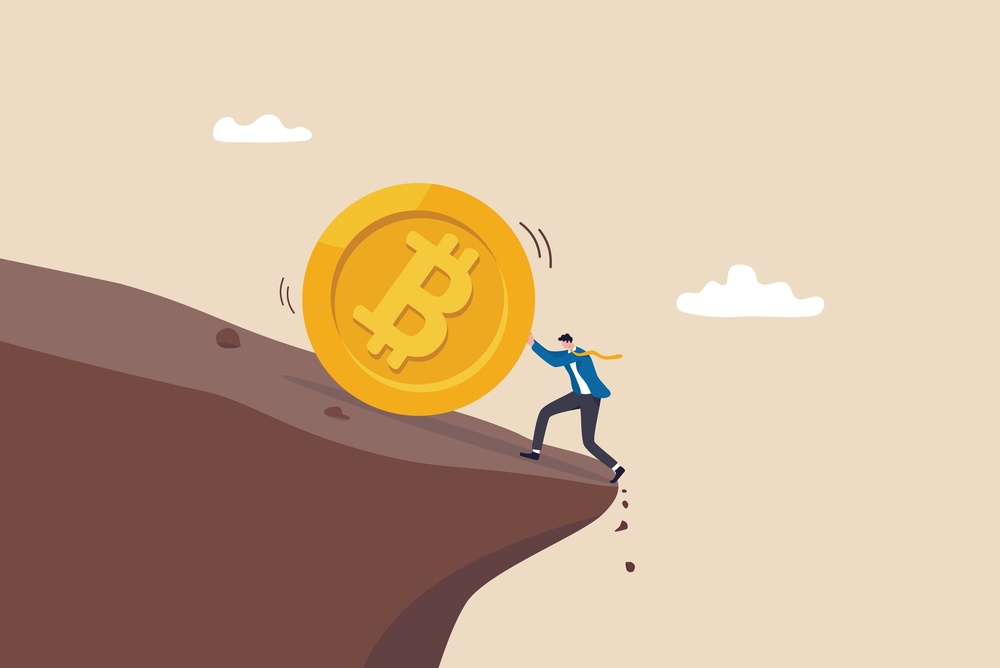
The crazy thing about Bitcoin versus other types of markets is that because there are no backstops or bailouts orchestrated by governments and rule-making agencies, the markets can simply do whatever they want to do 24/7 and nobody can stop it. You can freeze a single exchange in a single country, but you can’t stop the hundreds of other exchanges from honoring the true price action of bitcoin, and it’ll be super obvious to market participants what the real price of bitcoin is.
What do I mean about backstops or bailouts?
When there’s crazy price action on stocks or commodity prices, government entities can step in and prevent trading of the asset until markets normalize. They can even retroactively go in and change trades.
They Can Freeze Stock Trading
A good example of this is when in 2021, Gamestop and AMC stocks (collectively referred to as “meme stocks”) were halted due to supposed suspicious trading activity. As it turns out, preventing investors from buying a stock, causing it to fall in price, ended up helping a large hedge fund that was short the stock. How surprising.
Then, in 2022, when a short squeeze in the price of nickel appeared to benefit a few traders, the London Metal Exchange simply retroactively canceled their trades. Sucks for them, but it’s good for everyone, right? That’s debatable.
Of course, when car makers got caught with their pants down in 2008, then the airlines had money issues in 2020, the government was there to provide them with cheap loans to keep their companies afloat until markets stabilized and consumer demand resumed.
With bitcoin, everything is different.
Bitcoin Trades On The Global Free Market
Nobody was there to stop the trading of bitcoin when it dropped 50% in price in March 2020, or 30% so far this month in June 2022. Short it. Long it. Hodl it. Nobody cares. Bitcoin is traded globally, so trying to prop up the price is a fruitless activity.
Bitcoin miners, bitcoin exchanges, and crypto hedge funds blow up all the time when they act irresponsibly. You reap what you sow. Scary, but there is an advantage to it.
The advantage here is that you know the price you see in bitcoin is the honest, legitimate price based on market conditions. Everything is transparent. Everything is real. There are no do-overs. If a company blows up, it’s because they acted irresponsibly, and their coins get distributed to new market participants who can fix the mistakes of their previous owners.
The market is constantly clearing out dishonest actors and greedy degen traders, replacing them with a future bitcoiners. Of course, some will continue to test their luck, and most get rekt doing it. But each new wave of price fluctuations brings a new cohort of market participants who have the potential to be long term hodlers.
If you are long term holder of bitcoin and understand that what you hold is the most scarce money on the planet, then you can just ride out these short term price drops, and wait until the next bull run. Price is not always equal to real value. If you can wait for the public to wake up and realize the true value of bitcoin, then you have a low time preference.
Should You Be Worried About The Bitcoin Price Dropping?
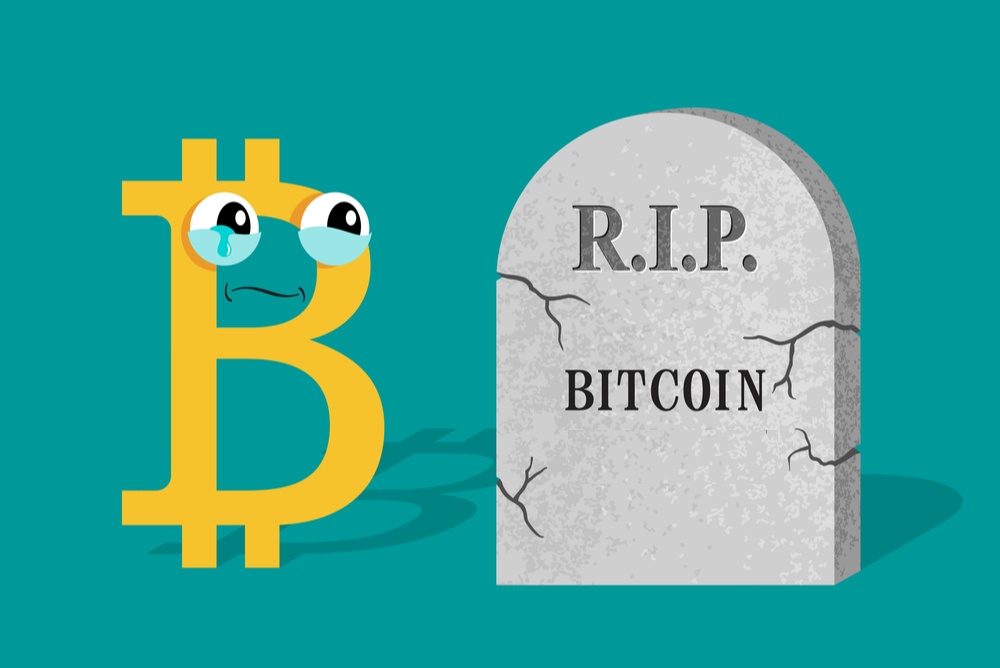
The good news about price drops is that as far as I know, there has literally never been a crash, small or large, directly related to issues with the protocol. What I mean to say is that when the price of bitcoin drops, it’s not because there’s anything wrong with bitcoin. 100% of the time that the price crashes, it’s because of some external thing that’s temporarily affecting the price.
Though I don’t consider bitcoin an investment per se, because it’s not a company producing cash flows, I do use some mental frameworks often used by investors when I think about bitcoin. One of those frameworks I lean on during unexpected negative price action is to ask myself, “Has the Bitcoin story changed at all?”
The Bitcoin Story Hasn’t Changed
Every single time, the answer has been, “No, the bitcoin story hasn’t changed”. Clickbait headlines, fake news, intentional fudding, and ignorance is not a good reason to sell my bitcoin, so I don’t.
Though it’s no fun to hodl through a crash and see the purchasing power of your bitcoin plummet, when you check your original investment thesis (why you bought bitcoin), and nothing has changed, there’s no reason to sell. You’ll never be able to accurately and consistently guess the precise bottom, and by selling, you are running a real risk of being forced to buy back in at a higher price. Then, you’ll very likely end up with less bitcoin.
This is why it’s important to have a strong foundation of understanding of what bitcoin is, how bitcoin works, and why you want to own it. Wanting to preserve the purchasing power of your money is a good start (NGU), but when the price goes down temporarily, suddenly your main reason for hodling doesn’t really stand on its own two legs. Is there any other reason to hold bitcoin other than dollar price gains? Absolutely.
Frequently Asked Questions
Will Bitcoin Crash To Zero?
It’s extremely unlikely that bitcoin will crash to zero. It would be completely unprecedented for an asset with millions of investors globally and more than a decade of trading to experience any kind of event that would cause a sudden crash to zero. Even in the extremely unlikely event that bitcoin went down in price more than ever before in its history, it will likely never hit a price of zero, even in a catastrophic scenario.
When Will Bitcoin Crash Again?
It’s impossible to predict when bitcoin will crash again, but you can be sure that it will crash at some point. The reason why, the exact date, how deep, and how long are unknown, but you can bet on bitcoin being volatile over the next few years.
Will Bitcoin Go Up Again?
Nobody can predict when and if bitcoin will go up again, but the investment thesis for bitcoin is that yes, it will go up again as more investors become aware of its monetary properties and begin to trust it as an alternative asset. The landscape of bitcoin investing has improved and increase significantly since it first attained a meager price in 2009, and its expected to reach an even wider audience with easier onramps over the coming decade.
Should I Buy Bitcoin Now?
Nobody can give you a direct answer of whether or not you should buy bitcoin right now except perhaps a personal financial advisor who is licensed and prepared to give you that information. This type of decision, outside of hiring a certified advisor, is going to up to you and your financial situation. For price-agnostic bitcoiners, any time is a good time to buy bitcoin.


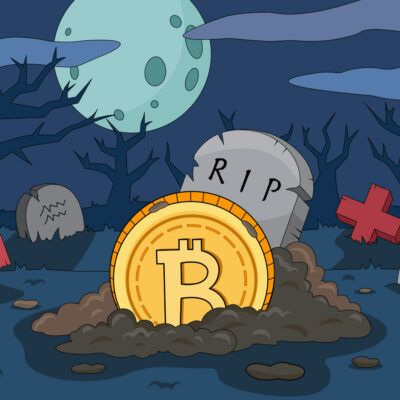





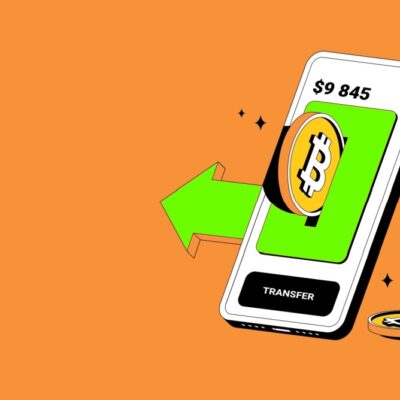
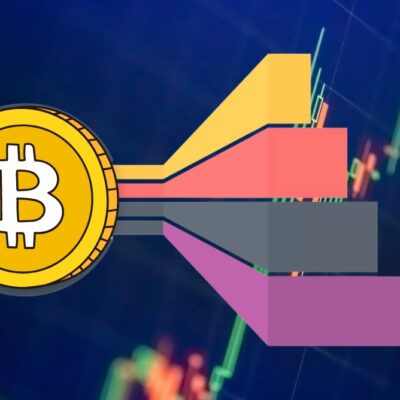








 Why Does Bitcoin Have Value?
Why Does Bitcoin Have Value?
Leave a Reply